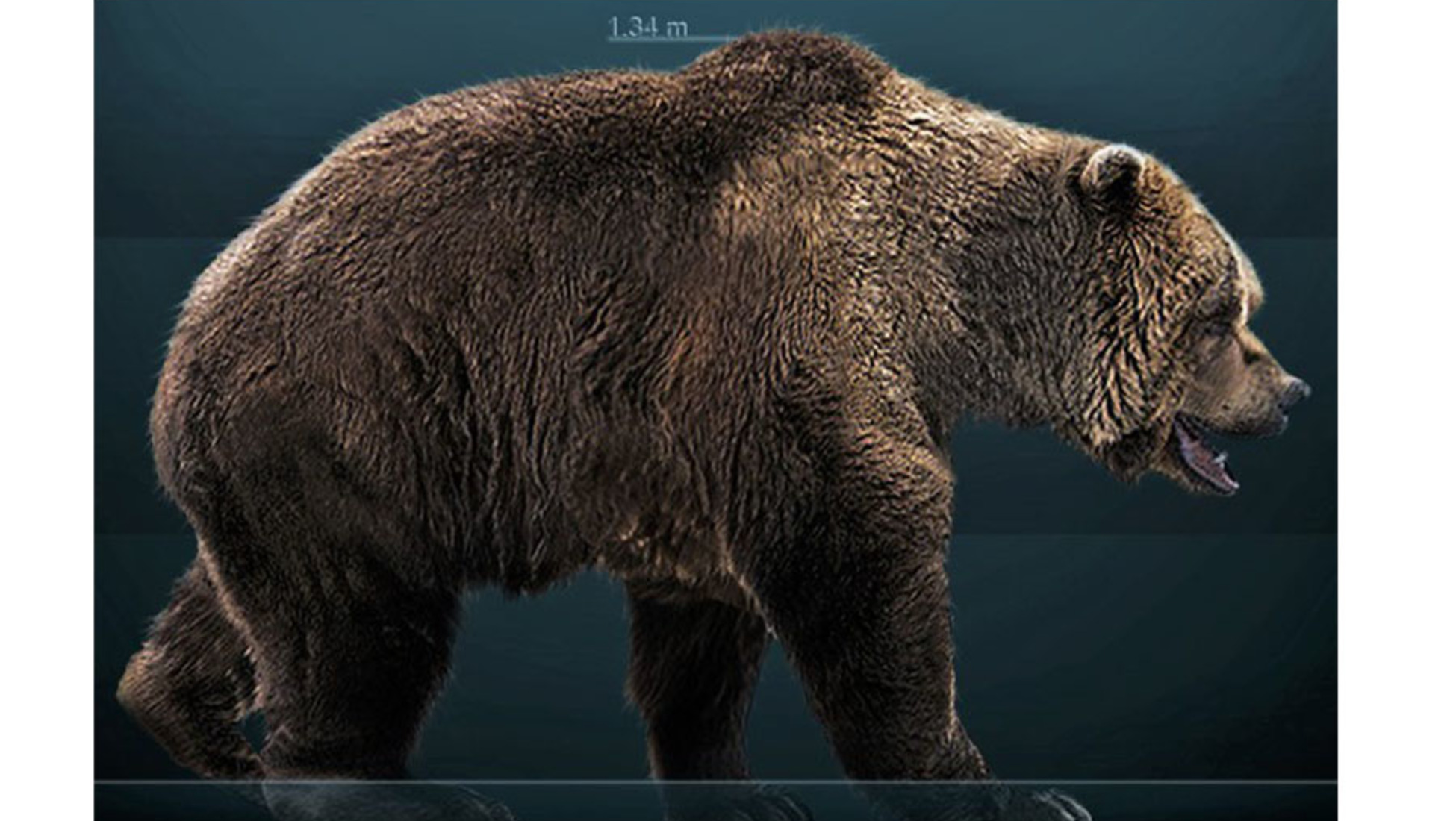Deep in the heart of the Pleistocene epoch, a colossal creature roamed the forests and mountains of Europe and Asia. Known as the cave bear, this ancient mammal left behind a legacy of fossils and intriguing artifacts that continue to fascinate scientists and enthusiasts alike. With its broad, domed skull and robust frame, the cave bear was a true marvel of nature, existing for hundreds of thousands of years before mysteriously disappearing from the Earth around 24,000 years ago.
What makes the cave bear so captivating? It's not just its sheer size, often comparable to today's Kodiak bears, but also the unique role it played in prehistoric ecosystems. Early humans even encountered this giant, coexisting with it for thousands of years. These interactions have been immortalized in cave paintings, jewelry, and other cultural relics, offering a glimpse into the lives of our ancestors.
Today, researchers continue to uncover the secrets of the cave bear. From its diet to its habitat, every piece of evidence adds to the puzzle of this ancient creature's life. Let's explore the fascinating world of the cave bear, delving into its history, characteristics, and the mystery surrounding its extinction.
Table of Contents
- What Did the Cave Bear Look Like?
- How Did the Cave Bear Live?
- Where Did the Cave Bear Call Home?
- Why Did the Cave Bear Go Extinct?
- Cave Bear - A Herbivore or Carnivore?
- What Can We Learn from Cave Bear Fossils?
- Did Humans Interact with Cave Bears?
- Final Thoughts on the Cave Bear
What Did the Cave Bear Look Like?
The cave bear was no ordinary creature. Imagine a bear with a broad, domed skull, a stout body, and long claws. It was built for power and endurance. Its weight ranged from 400 to 1,000 kg, making it one of the largest land mammals of its time. Sometimes, it's almost hard to believe that such a massive animal could have existed. The cave bear's head was enormous, with distinctive teeth that suggest it primarily feasted on plants. Yet, its sheer size might have intimidated even the most fearless predators.
How Did the Cave Bear Live?
Living during the Ice Age, the cave bear had to adapt to some pretty challenging conditions. In a way, it's incredible how these creatures managed to thrive in such a harsh environment. They were mostly vegetarians, munching on roots, berries, and leaves. Yet, there's a bit of mystery here. Scientists are still piecing together the puzzle of its exact diet. For instance, the cave bear's teeth show wear patterns that hint at occasional meat consumption. So, was it entirely vegetarian, or did it sometimes snack on animal flesh? More research might answer this question.
Where Did the Cave Bear Call Home?
The cave bear got its name for a reason. Most of its fossils were discovered in caves, where they likely spent a lot of time. These caves weren't just random shelters; they were carefully chosen for protection and comfort. In some respects, the cave bear's preference for caves mirrors modern bears' habits of denning. The European and Asian landscapes offered plenty of ideal spots for these massive creatures. Even today, archaeologists keep finding new cave bear fossils in regions like Germany and Bulgaria, shedding light on their ancient habitats.
Why Did the Cave Bear Go Extinct?
So, what happened to the cave bear? This is one of the biggest questions researchers face. A combination of factors probably contributed to its extinction. Climate change, for example, could have altered its food sources, making survival more difficult. Competition with other species, including early humans, might have also played a role. The cave bear's reliance on caves as shelters might have been a double-edged sword, offering safety but also making it vulnerable to environmental changes. It's kind of like how modern animals face challenges from habitat loss and climate shifts.
Cave Bear - A Herbivore or Carnivore?
Here's another interesting question: was the cave bear strictly a plant-eater? While its teeth suggest a mostly vegetarian lifestyle, there's some evidence that it occasionally ate meat. This could be due to scarcity of plant foods during harsh winters or simply opportunistic behavior. In fact, the cave bear's diet might have been more flexible than we initially thought. By studying its fossils, scientists can analyze tooth wear and isotopes to better understand what it ate. This research helps paint a clearer picture of its daily life.
What Can We Learn from Cave Bear Fossils?
Fossils are like time capsules, preserving the stories of ancient creatures. The cave bear's fossils have been found all over Europe and parts of Asia. These remains offer valuable clues about its size, behavior, and even its extinction. For instance, some fossils show signs of disease or injury, giving us insights into the challenges the cave bear faced. Additionally, the discovery of cave bear pendants and other artifacts suggests that early humans had cultural connections with this majestic creature. These findings are just a little bit mind-blowing when you think about how much they reveal.
Did Humans Interact with Cave Bears?
Humans and cave bears shared the same lands for thousands of years. In fact, there's evidence of direct interactions between the two species. Early humans might have hunted cave bears for food or used their bones and teeth to make tools and jewelry. Some cave paintings even depict what could be cave bears, indicating that they were significant to prehistoric cultures. It's kind of fascinating to think about how our ancestors viewed these giants. Did they fear them, respect them, or both?
Final Thoughts on the Cave Bear
Looking back, the cave bear was truly an extraordinary creature. Its massive size, unique adaptations, and mysterious extinction all contribute to its allure. By studying its fossils and cultural relics, we gain a deeper appreciation for the world that once was. Of course, there's still much to learn about the cave bear. Scientists continue to make new discoveries, shedding light on its life and legacy. So, the next time you hear about the cave bear, remember that it's more than just a prehistoric animal—it's a piece of Earth's rich history.
Anyway, the cave bear's story is a reminder of the incredible diversity of life that has existed on our planet. Whether you're a scientist, a history buff, or just someone curious about the past, the cave bear offers a captivating glimpse into a world long gone. It's almost like stepping back in time, imagining what it would have been like to encounter one of these giants in the wild. Frankly, it's a pretty awe-inspiring thought.



Detail Author:
- Name : Prof. Janet Collier DDS
- Username : jovanny.hodkiewicz
- Email : ddickinson@yahoo.com
- Birthdate : 1981-08-28
- Address : 2930 Reymundo Fall New Ivy, IN 22005-2358
- Phone : 1-225-968-9507
- Company : Corkery LLC
- Job : Heat Treating Equipment Operator
- Bio : Cum a rerum molestiae necessitatibus enim molestiae maiores. Numquam soluta reiciendis qui eveniet dignissimos rerum. Recusandae et voluptatibus velit est.
Socials
linkedin:
- url : https://linkedin.com/in/jaylenwolff
- username : jaylenwolff
- bio : Earum est aut et. Maiores odio et autem ut.
- followers : 2836
- following : 2607
twitter:
- url : https://twitter.com/jwolff
- username : jwolff
- bio : Et at rem ut et. Dolores culpa et sit accusamus architecto. Doloribus autem minima consectetur reiciendis.
- followers : 1928
- following : 1434
facebook:
- url : https://facebook.com/jwolff
- username : jwolff
- bio : Adipisci sunt quam molestias nemo recusandae et.
- followers : 6390
- following : 1639
tiktok:
- url : https://tiktok.com/@jaylen_id
- username : jaylen_id
- bio : Voluptatem explicabo qui ipsam culpa.
- followers : 1080
- following : 134